
The lobby is built over 60's style, and has photos of Latin stars who performed or were in movies that showed there when it became a more Latin moviehouse.

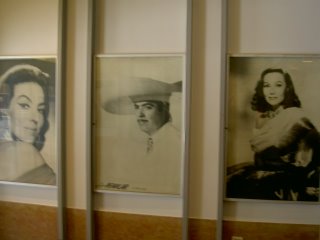
PierCarlo wanted in on the act:
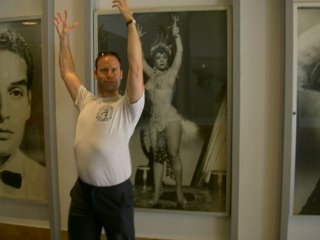
The theater itself was opened in 1918, and has a 110' freestanding balcony that was built of cement, as materials were in short supply. It was the first cement balcony of it's kind, and it was wieghed down with over a million pounds of sandbags to test its strength. There is a great organ grille as well that I tried to get a picture of, but I don' t think I was too successful. Here are pictures of the organ grille and the dressing rooms and rigging:


A note about the photos: some are dark, but I can see them much better on my MAC. And wierdly, as you will notice in the picture of the rigging, there are some with floating dots of different sizes. They are only in the photos of the theatres that had live performance, and really heavy in the older ones. I'll point them out as I go along. Ghosts?
I was excited at this point, as I knew we were going to see a lot of Antique Glamour:

And we also got the strange LA Gargoyle. A lute player on a bison. Why not?

And so we were, whisked from the street, we were next headed to the Cameo

This theatre was also known as the Clunes Broadway. It was built in 1910, strictly as a movie house. It's very simple, and reminds you of movie houses you might go into anywhere in the country. The wldest thing was walking through an electronics store, and finding this behind it. It's their storage room. Notice that there are no little dots floating about in here.


That's our guide in the yellow t-shirt. We didn't get to head into the Roxie, but I did get some pictures, and some of the terrazo inlays that are all over downtown:
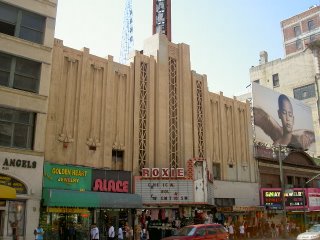

After this we went to the Pantages. You'll notice that the name was changed, but you can still see the Pantages sign above the new one. It was built in 1910, and the first headliner was Sophie Tucker.
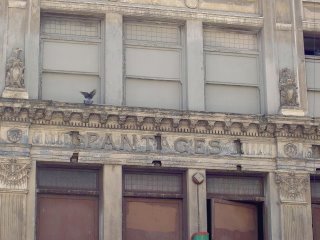

This is the theatre with the most floating dots. You'll see it especially in the picture of the balcony. The arch is pretty great, and it's spooky and fascinating to be in this one and look up at the flies. The rigging is still there, as it is in all of these. It's a little jewel box, and the acoustics are still great. The storage is on the orchestra floor, but the balcony is empty. This must have been a beautiful theatre. Somebody should do a production of "Follies" in one of these:


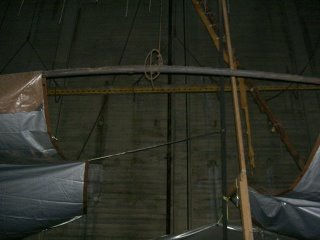


And here's that Balcony:

We walked on some more after this. The tour consists of six blocks on Broadway, and they're pretty wide blocks. Here are a couple of pictures of us walking. I think people are looking at a building, not Superman.

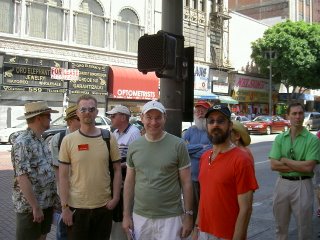
Next we walked on to take a look at the Los Angeles, where City Lights opened in 1931. The pictures we were shown of the inside are gorgeous. The man building it bankrupted himself. We were told it's in good condition, and there are still some screenings and shows that happen there. You can see how ornate it is outside. We then walked past the Tower, which looked amazing from the outside, and toward the Palace (which was the original Orpheum). We couldn't get in, but I got a great picture of the lobby.
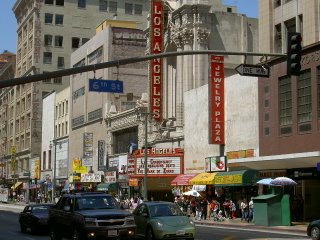
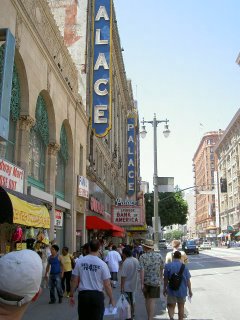
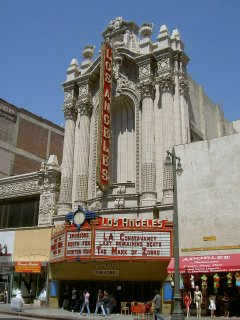



I guess no dots hang out in the lobby of the Palace. Our second to last, and longest tour spot was at the Orpheum, which was restored with private funds in 2001. It's beautiful, and we learned some interesting tidbits. When the American Idols go to Hollywood, they go to the Orpheum. It's got great balconies, a beautiful organ grille, grogeous fixtures, and a great donwstairs lobby with a fireplace, all below. This is where we asked the gentleman who has been in and around these theatres for about 60 years about ghosts. He said there used to be 5 in the Orpheum, but they haven't been heard of so much since renovation. He said they counted about 22 in the Pantages (see the dots above). There was still one wierd dot in one of the lobby photos, though. He said that a paranormal had been possessed by a nasty one when they were renovating. He also mentioned how dangerous theatres were, and that it was not uncommon for there to be accidental deaths, people falling, etc. So that was fun. The Orpheum is gorgeous, and they've done a great job. Two tidbits: the balcony curtains were white, but actually have turned the color they are from cigarette smoke. Ditto for the lobby marble. The yellowish color of the walls was there to match the marble, which was stained from smoke before it was cleaned in renovation. Here are some pics of the lobby, ticket booth, and lights:




And some more of the interior:



And finally, a nice seat on the couch in the restroom lobby, complete with fake fire for the sweltering summer day.
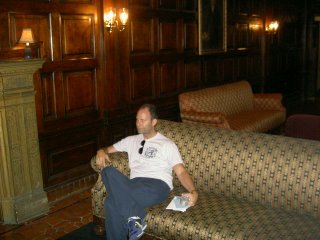

Here's where the camera ran out of batteries, so I didn't get a lot of people pictures in. Sad. But I took some photos on the way that I'll insert here, since our tour was not quite over. We ended up at the Warner Brothers theatre that's at 7th and Hill. It's now a diamond mart, but they've kept the arch, the exits, the balcony, etc. It's wild. Anyhow, here are the other pics. The first two are of an incredible Deco building called the Eastern something building on 8th or 9th and Bway. It's under renovation, but it's magnificent.


And some very aloof Angelinos

Who could not believe we were eating at
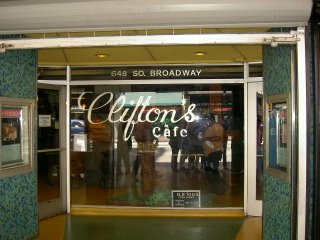
Clifton's! It was opened in 1935, and unfortunately the camera died before I could take pictures of the waterfall and taxidermy inside. I'm not kidding. Blond wood, let's go to Yellowstone theme, and great cafteria food. The usuals, as well as a chicken mole and things like that for the Mexican population that frequents it. Still reasonable. And I love cafterias. I had the beef with potato pancakes and gravy, with a salad and spinach. Followed by pudding, of course. And below, you'll see some of the terrazo medallions that are on the floor outside. Loved it. I'd go back.
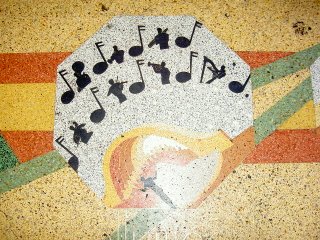



I love the prehistoric tarpits Sabbertooth tiger. So we were all sunburned and sated, and had a great time. Four of us went to see the Bradbury building on our way to our cars. It's an 1890's Belle Epoque gem. Who knew all this was still here? And thanks to the conservancy, it still is. Do it yourself some time. It's a great afternoon.



